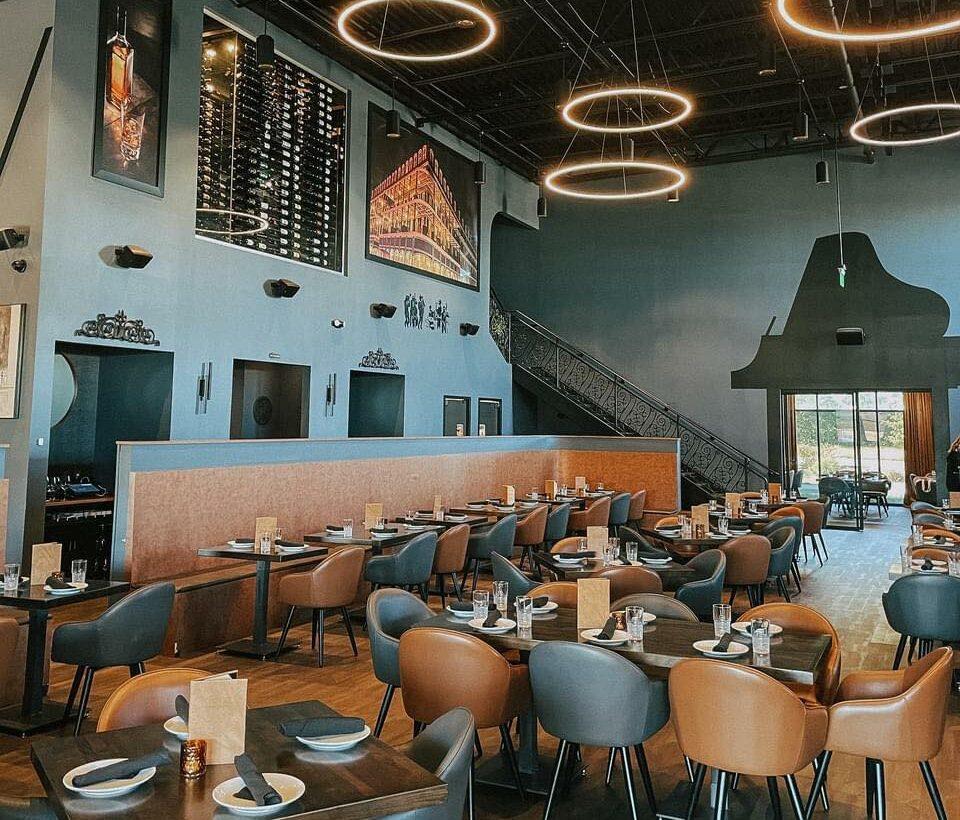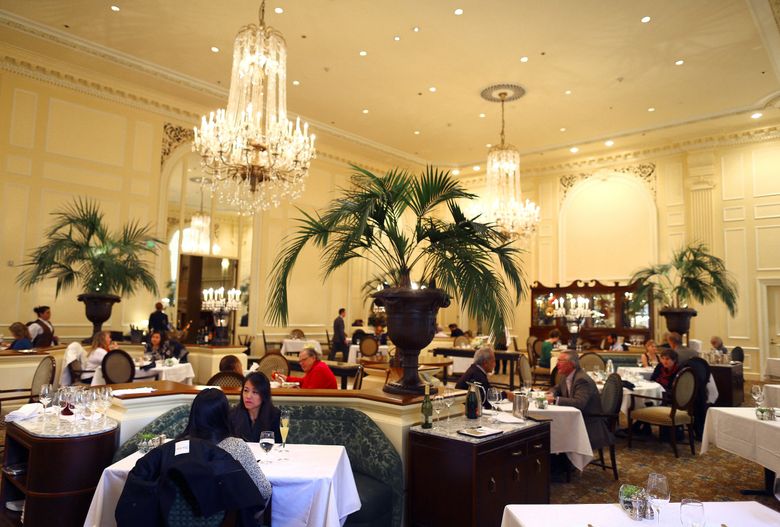Asian Fusion Restaurant: A Special Dining Experience in the Heart of Islamabad
Asian Fusion Restaurant: A Special Dining Experience in the Heart of Islamabad
Blog Article
Savor Authentic Asian Cuisine With a Pan-Asian Twist for a Cooking Adventure
Starting a culinary trip through genuine Eastern food, enhanced with a Pan-Asian twist, uses a distinct chance to explore the abundant tapestry of tastes that specify the region's diverse cooking practices. This experience welcomes you to appreciate the charming equilibrium of preferences-- sweet, salted, spicy, and sour-- harmonized by fragrant natural herbs and seasonings. Imagine the innovative blend of Thai curry and ramen or the unforeseen delight of sushi burritos. As you contemplate these tempting recipes, consider the social stories and historical impacts that shape them, each bite offering a tale waiting to be uncovered.

Checking Out Pan-Asian Flavors
In the realm of worldwide gastronomy, Pan-Asian cuisine attracts attention for its impressive variety and the harmonious interaction of flavors from various Eastern societies. This culinary approach commemorates the rich traditions and special ingredients located throughout the continent, creating a tapestry of preferences that is both rewarding and fascinating. Secret to Pan-Asian cuisine is its capability to balance contrasting tastes-- pleasant, salty, spicy, and sour-- while highlighting the quality and quality of each component.
From the umami-rich soy sauce of Japan to the intense chili peppers of Thailand, Pan-Asian cuisine uses an extensive scheme of flavors. These aspects are commonly incorporated in innovative methods, boosting dishes with layers of complexity. For circumstances, the usage of aromatic natural herbs such as lemongrass and cilantro, common in Vietnamese and Thai cuisine, adds a revitalizing illumination to dishes, while the consolidation of coconut milk provides a luscious, rich texture.
The emphasis on fresh produce and aromatic flavors makes sure that each dish is not just a feast for the palate but also for the senses. Pan-Asian food invites diners to begin on a culinary journey, exploring the vast and varied landscapes of Asian gastronomy with every bite.
Fusion Meals to Attempt
While Pan-Asian food is commemorated for its traditional tastes, the contemporary culinary landscape is increasingly embracing blend meals that blend these traditional components with impacts from other areas. This innovative technique not only honors the abundant heritage of Oriental cookeries however also presents novel preference experiences that appeal to modern tastes buds.
A prime instance of such a combination recipe is the Korean-Mexican taco, where marinated bulgogi beef is wrapped in a warm tortilla, covered with kimchi and a zesty gochujang-infused salsa. This mix marries the vibrant, mouthwatering tastes of Korea with the vibrant, fresh elements of Mexican food. Similarly, sushi burritos have obtained popularity, joining together the delicate virtuosity of Japanese sushi with the hearty, hand-held comfort of a burrito, typically featuring combination components like tempura shrimp and avocado with a drizzle of wasabi mayo.
Another notable meal is Thai curry ramen, which instills the creamy, fragrant spices of Thai curry into the soothing broth of traditional Japanese ramen, producing an unified blend that tantalizes the detects. These blend dishes extend beyond mere novelty; they stand for a culinary discussion in between cultures, motivating expedition and development worldwide of Pan-Asian cuisine.
Necessary Ingredients and Spices
To absolutely appreciate Pan-Asian cuisine, one have to recognize the crucial components and seasonings that create its junoon structure. This diverse cooking design attracts from a rich tapestry of Asian practices, utilizing a harmonious mix of structures and flavors.
Aromatic components are essential, with lemongrass, garlic, and ginger being common across numerous Pan-Asian dishes. These components offer a fragrant base that boosts the complexity of tastes. Seasonings such as star anise, cardamom, and cinnamon present heat and character, echoing impacts from regions like China and India.

Cooking Techniques and Tips
Mastering the art of Pan-Asian cuisine needs familiarity with its distinctive cooking methods, each contributing to the vibrant tapestry of flavors this cooking custom is celebrated for. Central to these approaches is the stir-fry, a quick cooking strategy that preserves the dietary stability and vibrant colors of ingredients. Using a wok, the stir-fry approach enables also heat circulation, essential for accomplishing the particular texture and taste equilibrium of Pan-Asian recipes.
Another essential strategy is steaming, specifically prevalent in Chinese food. This gentle approach maintains the all-natural tastes and nutrients of ingredients, making it optimal for fish and shellfish and vegetables. Dumplings, a beloved staple, frequently take advantage of steaming, causing soft, succulent structures.
Cooking, also important, presents smoky depths to meals such as Oriental bulgogi or Japanese yakitori (Romantic restaurants Islamabad). This technique typically includes marinading components, allowing flavors to penetrate deeply prior to cooking over an open flame or hot plate
Last but not least, grasping the art of stabilizing flavors-- sweet, sour, salty, bitter, and umami-- is crucial. Effectively layering these elements can elevate a meal from regular to remarkable, using a complicated and pleasing cooking experience that embodies the essence of Pan-Asian cuisine.
Dining Experiences Worldwide
Around the world, Pan-Asian food uses an unmatched dining experience, commemorated for its abundant tapestry of flavors and lively discussions. This cooking phenomenon has transcended cultural limits, catching the hearts and tastes of food enthusiasts worldwide. In multicultural cities like New York, London, and Sydney, Pan-Asian restaurants offer as fusions where culinary customs from Thailand, Japan, China, and past merge, supplying restaurants with a diverse mix of recipes that highlight the area's diversity.
The worldwide appeal of Pan-Asian food depends on its ability to provide both authenticity and development. Chefs skillfully marry conventional ingredients such as lemongrass, soy sauce, and miso with contemporary techniques, leading to meals that are both acquainted and refreshingly brand-new. This blend allows diners to start a cooking trip that respects heritage while accepting modernity.
In addition, eating experiences are boosted via attentively created settings that mirror the principles of Pan-Asian looks. From minimalist Japanese-inspired insides to dynamic Thai-themed spaces, each dining establishment supplies an unique atmosphere that matches the cooking offerings. Consequently, patrons are not merely consuming a dish yet partaking in a social experience, making Pan-Asian eating a really worldwide phenomenon.
Verdict
The exploration of Pan-Asian food supplies a profound understanding of the intricate interplay of tastes and cooking practices across Asia. By welcoming fusion dishes such as Thai curry ramen find more and sushi burritos, the cooking journey not just highlights the flexibility of conventional active ingredients but additionally showcases ingenious modern-day strategies. This gastronomic journey, enriched by essential seasonings and cooking methods, gives an unique possibility to value the multiculturalism and cooking artistry that define Pan-Asian food on a global scale.
Beginning on a cooking trip via genuine Asian food, enhanced with a Pan-Asian twist, provides a distinct possibility to discover the abundant tapestry of flavors that specify the region's diverse culinary customs.In the realm of global gastronomy, Pan-Asian cuisine stands out for its exceptional diversity and the unified interaction of flavors from numerous Oriental cultures. Key to Pan-Asian cuisine is its capability to stabilize different tastes-- pleasant, salted, spicy, and sour-- while highlighting the quality and quality of each active ingredient.

Report this page